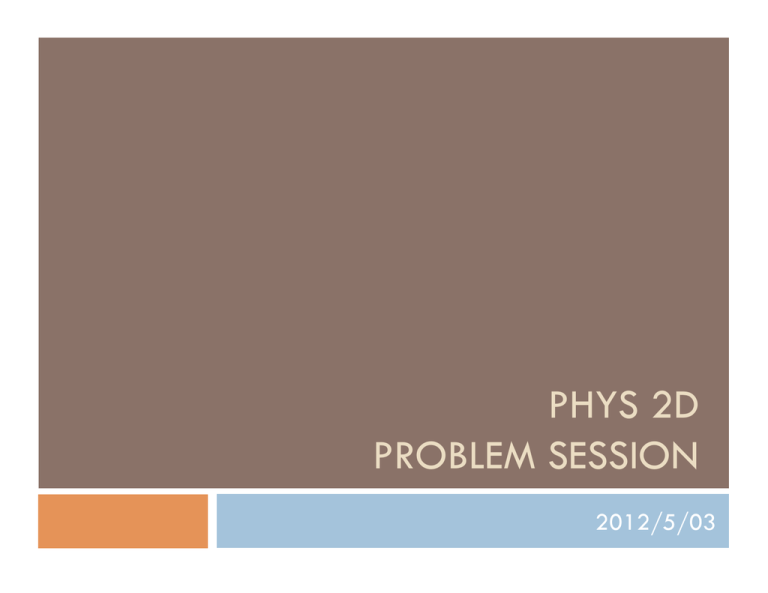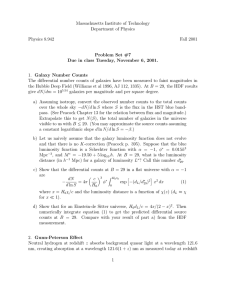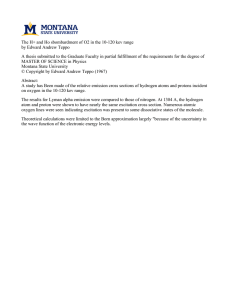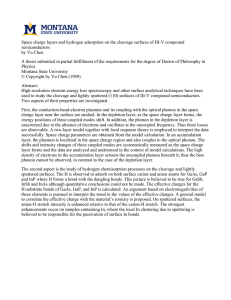PHYS 2D PROBLEM SESSION 2012/5/03
advertisement

PHYS 2D PROBLEM SESSION 2012/5/03 Quiz 2 regrade request: before quiz 3 Quiz 2 still being graded Solution has lots of typesetting errors Number is usually correct Let Dr. Sutterly or me know if you find serious/ conceptual errors 4.3, 4.7, 4.8 Do them! Questions? 4.13 Lyman emission spectra: hydrogen goes from state ni=n to nf=1, ni=2, 3, 4, …, ∞ Ephoton=hc/λ=Ei-Ef 2 2 2 2 1/λ=R(1/nf -1/ni )=R(1/1 -1/n ) ni>nf=1, A series of emission lines corresponds to a set of ni Different nf give different series Lyman: nf=1, Balmer: nf=2, Paschen: nf=3 4.14 Radius of the 1st, 2nd, 3rd Bohr orbit of hydrogen 2 2 2 2 2 r=n ħ /meke =n a0=0.0529n nm r1=0.0529 nm r2=0.2116 nm r3=0.4761 nm Speed of electron in these orbits 2 2 1/2/n K=mev /2=-E=13.6/n eV, v= (2*13.6eV/me) 6 v1=2.19*10 m/s=0.00726c v2=0.00364c=v1/2, v3=v1/3 v<<c 4.15 Energy level of He+ ion Same as hydrogen, except Z=2 2 2 E=-13.6*Z /n eV Everything is 4 times that of hydrogen 4.23 Hydrogen in state n=1 r=0.0529 nm p=mev, v calculated in 4.14 L=mevr=nħ=ħ 2 K=mev /2 2 U=-ke /r 2 2 2 Circular motion, centripetal force mev /r=ke /r U=-2K E=U+K=-K=-13.6 eV 4.32 Mass of proton is not infinite Must consider the motion of proton Done by simply using reduced mass µ instead of me µ=meM/(me+M), M: mass of nucleus a0~1/me, E~1/a0, so E’=E*µ/me λ~1/E, λ‘=λ*me/µ Using me: 656.1469 nm Hydrogen: 656.4691 nm Deuterium: 656.2925 nm Tritium: 656.2325 nm





